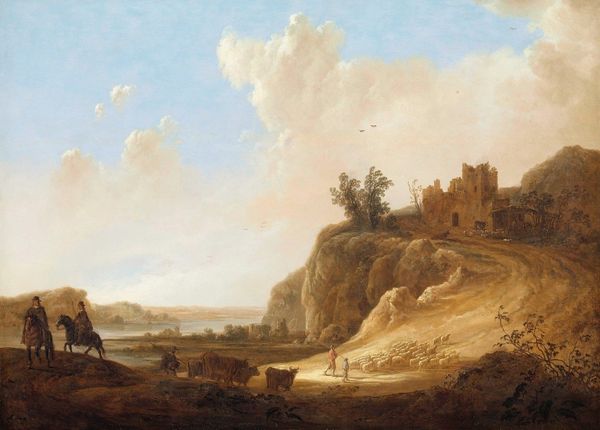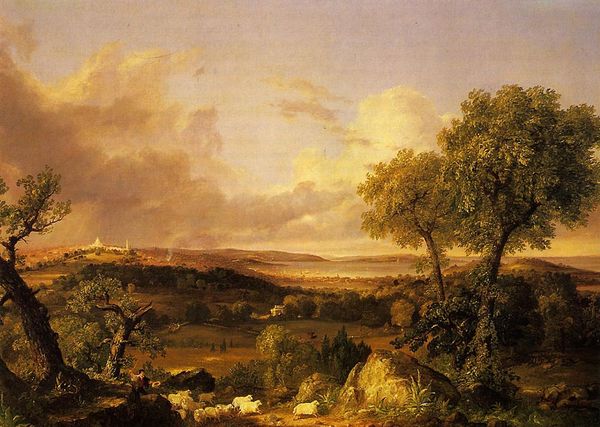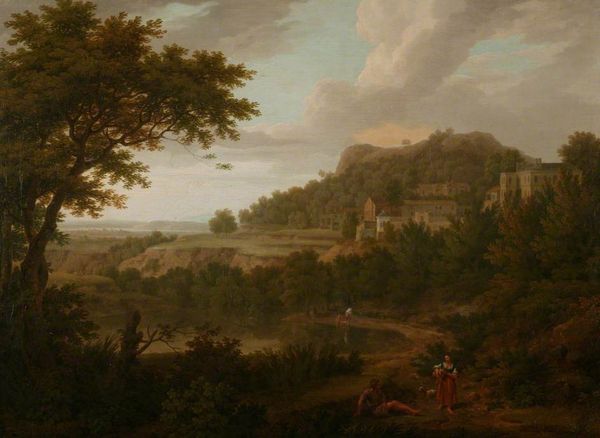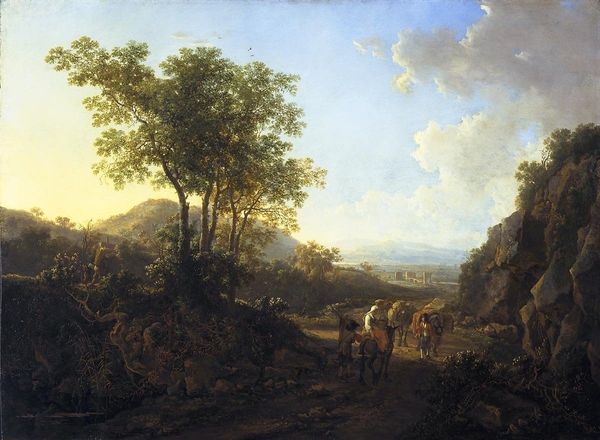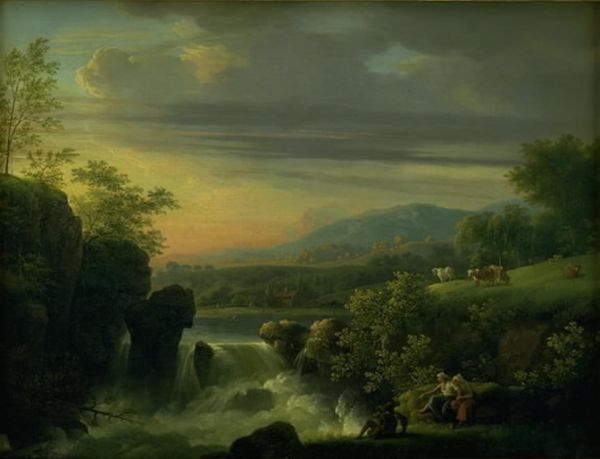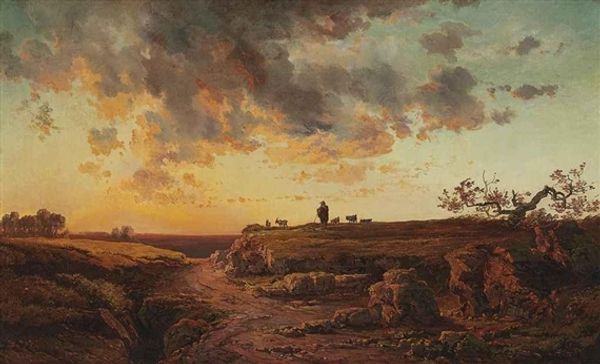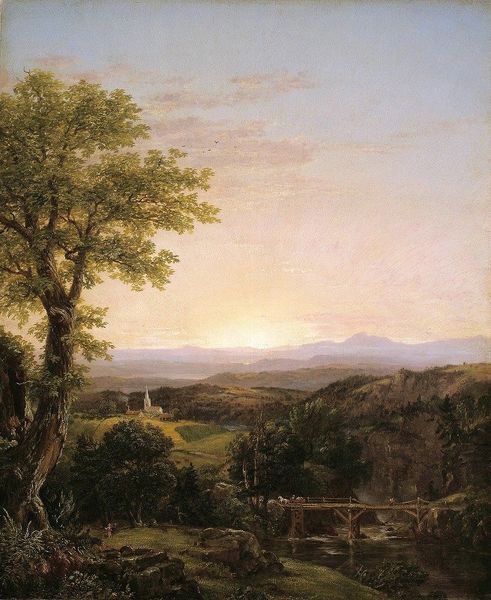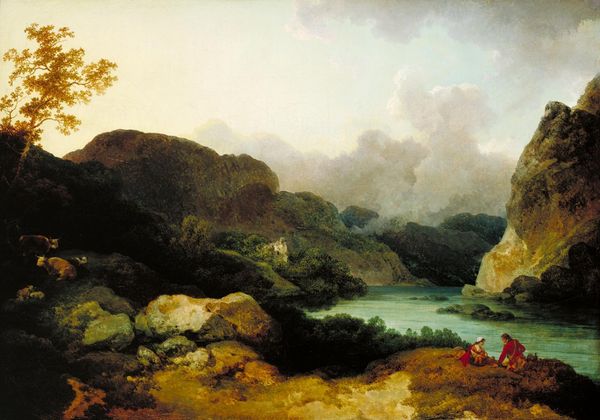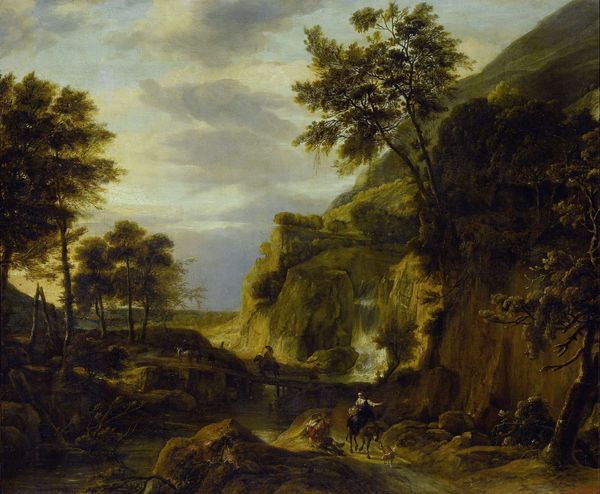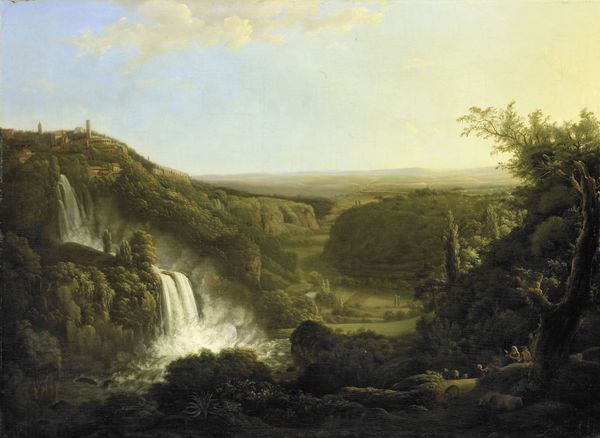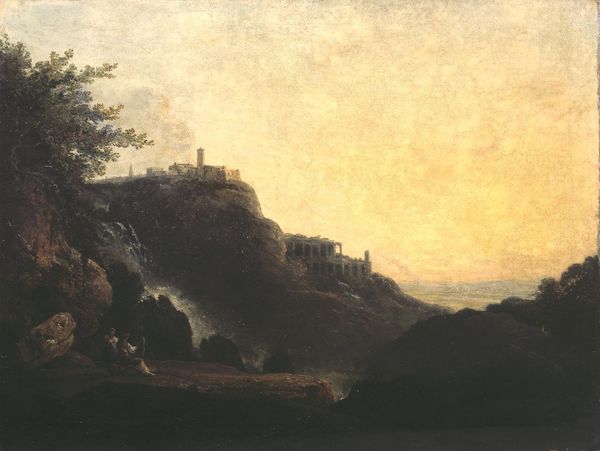
A view of the Roman Campagna from Tivoli 1645
0:00
0:00
claudelorrain
Royal Collection (Buckingham Palace), London, UK
Copyright: Public domain
Claude Lorrain made this painting of the Roman Campagna from Tivoli in the mid-17th century, using oil on canvas. Lorrain’s idyllic landscapes, while seemingly natural, were carefully constructed in the studio. Here he shows us an expansive view of the Italian countryside, bathed in the golden light of dawn or dusk. We see classical architecture subtly integrated into the scene, alluding to Italy’s rich history. This romantic vision of nature appealed to the sensibilities of the time, reflecting a growing interest in the classical world and the picturesque. Paintings like these served to reinforce the cultural authority of Rome. The strategic placement of such works, particularly within aristocratic collections, underscored the owner’s refined taste and their connection to a lineage of powerful rulers. To fully understand the cultural resonance of this work, consider its role in shaping perceptions of landscape and national identity, by consulting historical texts, travelogues, and studies of patronage. The meaning of art lies not only in the image itself but also in its complex relationship to the society that produced it.
Comments
No comments
Be the first to comment and join the conversation on the ultimate creative platform.
